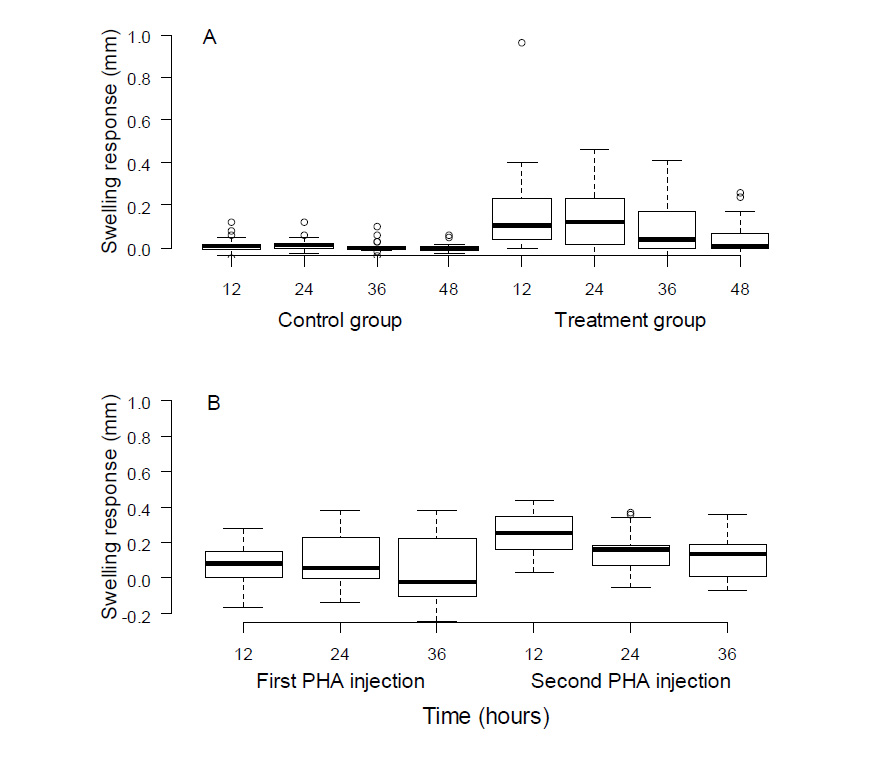
Ecological Archives E096-046-A1
Marianne Mugabo, Samuel Perret, Beatriz Decencière, Sandrine Meylan, and Jean-Franҫois Le Galliard. 2015. Density-dependent immunity and parasitism risk in experimental populations of lizards naturally infested by ixodid ticks. Ecology 96:450–460. http://dx.doi.org/10.1890/14-0524.1
Appendix A. Validation of the PHA skin swelling protocols.
Fig. A1. Pilot studies of PHA skin swelling protocols in common lizards. (A) Repeated measurements of the leg thickness increase after injection with PHA (treatment group, n = 38 adult males) and a PBS buffer (control group, n = 20 adult males). The thickness of the leg significantly increased after an injection with PHA but not with PBS (PHA = 0.104 ± 0.021 mm, PBS = 0.009 ± 0.017 mm). Skin swelling was strong and maximal around 12-24 hours after PHA injection in the treatment group and decreased with time (treatment × time: LRT = 6.94, P =0.009, slope estimate in treatment group = -0.003 ± 0.001, in control group = -0.0005 ± 0.0008). In addition, the intercept and the slope of the skin swelling response varied significantly among individuals in the treatment group (intercept SD = 0.08 [0.06,0.10] 95% CI, 43% of phenotypic variation; slope SD = 0.003 [0.002,0.005] 95% CI, 14% of phenotypic variation; residual SD = 0.08 [0.07,0.10] 95% CI, 43% of the phenotypic variation). (B) Repeated measurements of the leg thickness increase after an injection of PHA following a first injection of PHA (second PHA injection, n = 24) or following a first injection of PBS buffer (first PHA injection, n = 21). A significant time per treatment interaction was found (LRT = 5.04, P = 0.02). Skin swelling almost tripled during the secondary PHA injection and decreased faster with time than during the primary PHA injection (first injection: intercept = 0.104 ± 0.034, slope = 0.001 ± 0.001; second injection: intercept = 0.299 ± 0.044, slope = -0.005). In this experiment, intercept and slope of the skin swelling response also varied substantially among individuals in both groups (intercept SD = 0.11 [0.08,0.14] 95% CI, 68% of phenotypic variation; slope SD = 0.003 [0.001,0.005] 95% CI, 7% of phenotypic variation; residual SD = 0.07 [0.05,0.08] 95% CI, 25% of phenotypic variation).